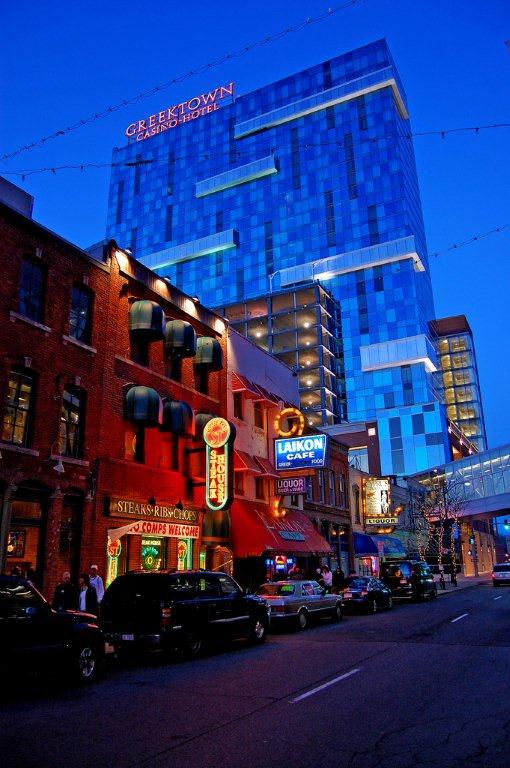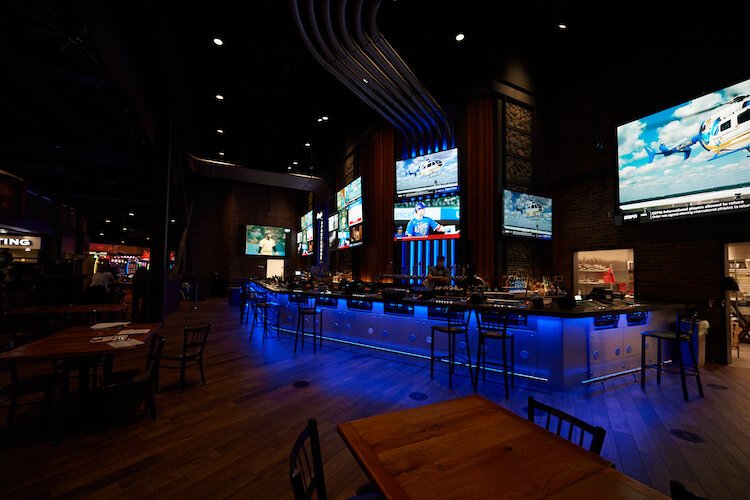Casino St Joseph Michigan
Posted By admin On 15/07/22| Total population | |
|---|---|
| 127 | |
| Regions with significant populations | |
| Michigan | |
| Languages | |
| English, formerly Potawatomi | |
| Religion | |
| Christianity, traditional tribal religion | |
| Related ethnic groups | |
| Other Potawatomi, Ojibwe, Odawa |
The Nottawaseppi Huron Band of Potawatomi (NHBP) is a federally-recognized tribe of Potawatomi in the United States. The tribe achieved federal recognition on December 19, 1995, and currently has approximately 127 members.
- Casinos in Saint Joseph on YP.com. See reviews, photos, directions, phone numbers and more for the best Casinos in Saint Joseph, MI.
- Half hour drive from Silver Beach in St. Joseph, MI, 35 Mins from Warren Dunes and 45 minutes from South Haven. Land of Lakes Campground, located across the road from Round Lake. Beach access is a short walk, and clean shallow water is perfect for swimming or floating on a raft.
The Notawasepe Potawatamie Reservation is located at 42°06′18″N85°15′40″W / 42.10500°N 85.26111°W in Athens Township in southwestern Calhoun County in southwestern Michigan. It has a land area of 129.4 acres (524,000 m2). It has purchased an additional 230 acres of land for its use and operates a gaming casino in Battle Creek.
Nearby casinos: Dowagiac Four Winds Casino (17mi.), New Buffalo Four Winds Casino (38mi.), Wayland Gun Lake Casino (41mi.), Michigan City Blue Chip Casino & Hotel (48mi.), Battle Creek Firekeepers Casino & Hotel (58mi.).
Name[edit]

Despite the name, this band of Potawatomi has no direct connection with the unrelated Huron people. Rather, both 'Nottawaseppi' and 'Huron' refer to the band's historical location along the Clinton River in southeastern Michigan. This river was formerly known as the Nottawasippee River or the Huron River of St. Clair. The word Nottawasippee is an Ojibweethnic slur meaning 'like rattlesnakes', referring to the Huron people, who inhabited the area prior to the arrival of the Potawatomi, Odawa and Ojibwe.[1][2][3]
History[edit]
In the 19th century, especially, the Potawatomi people and closely related tribes of Odawa and Ojibwe peoples of the Anishinaabe were affiliated as the Council of Three Fires. All these peoples were highly decentralized and bands operated independently. During the 17th and 18th centuries, numerous bands moved into what is now Michigan.
The Nottawaseppi Huron Band of Potawatomi signed a treaty with the United States to cede much of its land in 1820, and was assigned a smaller portion of land as its reservation. It is located at 42°06′18″N85°15′40″W / 42.10500°N 85.26111°W in Athens Township in southwestern Calhoun County.
In the 20th century, the 1934 Indian Reorganization Act was intended to encourage tribes to set up self-government. The nine historic bands of Odawa, Ojibwe and Potawatomi in Michigan were not covered by this act and later had to achieve federal recognition or reaffirmation as tribes independently, a process that continues.
The band organized to regain self-government, gaining reaffirmation of its status as a tribe in 1995 by Congressional legislation. Their homeland headquarters are in Wakeshma Township, near Athens, in the southwestern region of Michigan's Lower Peninsula. This is about 17 miles southwest of Battle Creek (about 22 miles by vehicle route).[4] Athens Township is within the major city's metropolitan area. The Band also maintains satellite offices in Grand Rapids, about 74 miles north of Fulton/Athens.[5] The service area of the tribe includes the reservation as well as members living in Kalamazoo, Calhoun, Ottawa, Kent and Allegan counties.[6]
Government[edit]
The NHBP is governed by a written constitution and an elected 5-member tribal council. This includes the following executive officers: Chairperson, Vice-Chairperson, Secretary, Treasurer and Sergeant-at-Arms.
Tribal Court[edit]
The NHBP Tribal Court was established in 2006. It is run by a Tribal Chief Justice.
Tribal departments[edit]
The NHBP administration is divided into departments for Operations, Finance, Enrollment, Education, Housing, Health, and Language.

Economy[edit]

The NHBP own FireKeepers Casino, a 236,000-square-foot (21,900 m2) casino with an attached 2,078-space parking garage on 78 acres (320,000 m2) located in Battle Creek, Michigan. This operation is governed by a compact with the state of Michigan.
Tribal timeline of events[edit]
- 1970 – The Tribe is incorporated in the state of Michigan. Government by a written constitution and an elected Tribal Council is established.
- 1995 – The United States government restores federal recognition to the tribe on December 19.
- 1998 – The Tribe purchases a 155-acre (630,000 m2) property on Q Drive near Fulton, Michigan.
- 2000 – An administration building is constructed.
- 2003 – A multi-use trail system is constructed.
- 2004 – Road construction begins. On August 7, the Athens Arch is dedicated by the Athens Superintendent of Schools at Athens High School. The arch commemorates the history of the Huron Potawatomi and the cordial relations between the tribe and the town of Athens, Michigan.
- 2005 – The tribe constructs its first group of single family, energy-efficient homes on the Reservation.
- 2006 – A Tribal court is established.
- 2007 – A Community Center and Health Center are constructed. A 79-acre (320,000 m2) parcel of property in Emmett Township is placed into Federal trust on behalf of the Tribe. The Tribe places 75 acres (300,000 m2) of the Q Drive property into the USDA wetland reserve program.
- 2008 – Construction begins on FireKeepers Casino in Battle Creek, Michigan.
- 2009 – FireKeepers Casino opens on August 5, 2009.[7]
- 2010 – Nottawaseppi Huron Band chairwoman Laura Spurr, who had served in that position since 2003 and helped to develop the FireKeepers Casino, dies on February 19, 2010.[8]
See also[edit]
- Notawasepe Potawatamie Reservation, established by treaty of 1820 with the United States and home of many of the band's ancestors in the 1820s.
References[edit]
- ^'Child of the ice age: The Clinton River'. MSU Extension. Retrieved 8 February 2016.
- ^Leeson, Michael A. (2005) [1882]. 'Organization'. History of Macomb County. Ann Arbor, Mich.: University of Michigan Library. p. 297. Retrieved 2006-10-01.
- ^'History of Macomb County, Michigan : containing ... biographical sketches, portraits of prominent men and early settlers : the whole preceded by a history of Michigan ...'umich.edu. Retrieved 8 February 2016.
- ^Fulton, MI to Battle Creek, MI, Distance between Cities Website, accessed 2 January 2016
- ^Fulton, MI to Grand Rapids, MI, Distance between Cities website, accessed 2 January 2016
- ^'Nottawaseppi Huron Band of Potawatomi', Inter-Tribal Council of Michigan, 11 October 2012, accessed 2 January 2016
- ^'Laura Spurr, tribal chairwoman of Nottawaseppi Huron Band of the Potawatomi dies in California'. Kalamazoo Gazette. Mlive.com. 2010-02-19. Retrieved 2010-03-09.
- ^Hicks, Mark (2010-03-01). 'Laura Spurr, Grosse Pointe Park, Leader gave 'whatever it took' to support her tribe'. Detroit News. Retrieved 2010-03-09.
- Huron Potawatomi Reservation, Michigan United States Census Bureau
- Tribal History, Nottawaseppi Huron Band of Potawatomi
External links[edit]
- Bob Van Alstine, Tribal Profile: 'Nottawaseppi Huron Band of Potawatomi', Inter-Tribal Council of Michigan
The bluff in St. Joseph offers some of the most beautiful vistas in Michigan.
The Maids of the Mist fountain, featuring the two figures, Constance and Hope, has delighted visitors to Lake Bluff Park since 1892. Prior to being moved to St. Joseph, it entertained thousands at the Chicago Interstate Industrial Exposition (1873- 1891).
Downtown St. Joseph welcomes visitors with its quaint streets, sweet aroma of fresh-made sweets and wide array of shopping.
The John E. N. Howard Band Shell along Port St. is the weekly scene of free concerts throughout the summer. This popular venue offers toe-tapping entertainment and incredible views of the St. Joseph River and Lake Michigan.
The Whirlpool Centennial Park and Compass Fountain are favorite destinations from mid May to end of September. Located just yards from Silver Beach, the fountain’s 8 cannons shoot 2,560 gallons of water per minute. All ages love dashing beneath the water as it arcs 35 feet up and 75 feet out across a 150-foot diameter splash pad.
Silver Beach is ranked among the top family beaches by Parents Magazine. It’s soft sand and fresh water provide many memory-making pastimes including swimming, volleyball, beach combing, castle building and some of the most amazing sunsets.
The St. Joseph River Yacht Club is nestled on the north side of the river beside the City’s West Basin Marina. The private club, founded in 1913, is located in the historic former U.S. Ninth District Lighthouse Depot. It hosts several popular sailing and swimming events, including the annual Labor Day Weekend Tri-State Regatta.
Downtown St. Joseph is a year-round shopping destination with its Victorian-era architecture, quaint shops, wineries, bakeries, brew pubs and restaurants, many offering views of Lake Michigan.
Farmers Market, located in Lake Bluff Park between Broad and Pleasant Sts., is open on Saturdays from the end of May to early October. Southwest Michigan is nationally renowned for its fresh fruits, vegetables and flowers and this market showcases the just-picked goodness.
The St. Joseph River has a rich history. From native tribes to French explorers to brave lighthouse keepers to fearless Coast Guard sailors to recreational boaters, these waters are still a source of fishing stories, boat parades and quiet ponderings.
Quiet, tree-lined streets, Victorian-era homes and sidewalks make this one of the most picturesque, walkable cities in the Midwest.
The South and North Piers attract thousands of residents and visitors annually to walk along the river to the lighthouses, fish with a buddy, spend romantic moments with loved ones or watch the sun bid the day goodbye in a blaze of glory.
Fishing on Lake Michigan or the St. Joseph River is an angler’s dream. Bring your own craft or charter a boat to catch coho salmon, brown trout, steelhead, yellow perch, smallmouth bass or walleye. You can purchase the required license at nearby bait and tackle shops.
South Haven Michigan
The Harbor Shores Trails and John and Dede Howard Recreational Trail offer miles of scenic walking, running and bicycling paths that take you through the woods, by the Paw Paw and St. Joseph Rivers and alongside Lake Michigan.
Shadowland Pavilion, located on Silver Beach, can be rented for family gatherings and special events. It is also a popular concert and performance venue.
Casino In St Joseph Michigan
The historic North Pier Lighthouse is one of the most photographed icons of St. Joseph. Built in 1907, it recently underwent a $2 million restoration, funded by private donations. In addition to being the subject of millions of photos, the lighthouse was also featured on a U.S. postage stamp in 1995.
Things To Do In St Joseph Michigan
Light Up the Bluff is one of dozens of festive events held in St. Joseph throughout the year. From early December to mid-February thousands of twinkling lights brighten our winter nights along Lake Bluff Park. Other winter activities include an outdoor public art display, Luminary Festival, Live Mannequins, Reindog Parade, chili tour and ice carving festival.